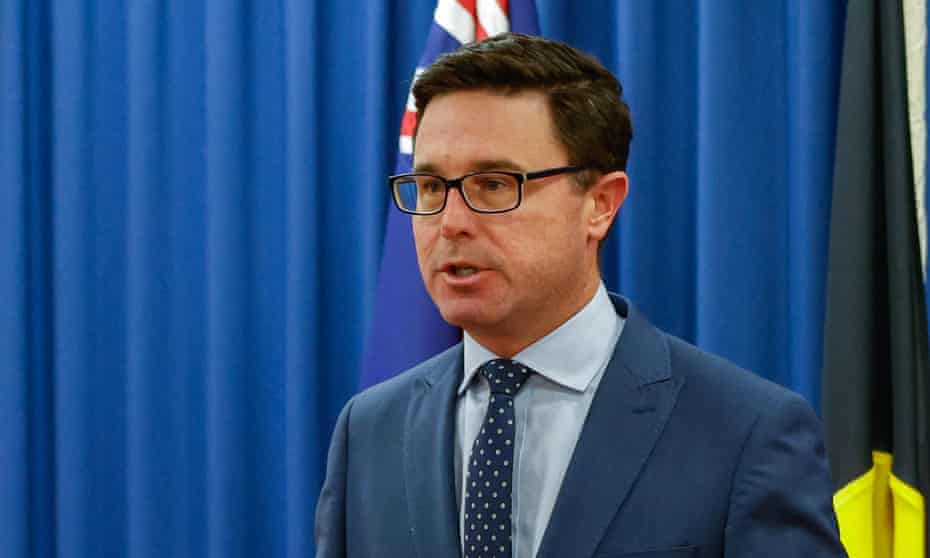Extract from The Guardian

The new Nationals leader, David Littleproud, made a claim this week that some viewers may have taken to mean that one such CCS project was ready to go.
Speaking with the ABC Insiders host, David Speers, Littleproud was trying to defend the Morrison government’s energy and climate policy, which he said was about “not only protecting gas [but] protecting our coal industry as well with carbon capture and storage”.
Littleproud gave an example: “You can look about 60km west of where I’m sitting now and carbon capture and storage is being implemented on a coal-fired power station from Millmerran,” he said.
“That’s the investment we made in giving investment certainty and making sure that we had reliable energy. Complementing that with renewables and also gas.”
There is a CCS plan involving the Millmerran coal power station, but to describe it as “being implemented” is something of a credibility stretch.
The plan at the power plant, operated by InterGen, comes in two parts. Neither is close to being under way commercially.
The first part is to “capture” some CO2 after the coal has been burned. A factsheet on the project, known as CTSCo and run by coalminer Glencore, was released in January and said an engineering design study had been done. But that’s a long way from a working project being “implemented”.
The second part involves trucking the supercooled CO2 by lorry 260km to CTSCo’s tenement in the Surat Basin where Glencore says it has drilled at least two tests.
The company has not yet submitted an environmental impact assessment or gained any environmental approvals for the project, but says CO2 transported there could be stored in a geological formation 2.3km below the ground.
In June last year, Littleproud announced the Morrison government had given $5m to the CTSCo project, which was first raised by Glencore in 2010. In April this year, Glencore said it had received a further $25m in taxpayer money for the project.
Yesterday, Glencore announced two more commercial partners in CTSCo – each pitching in $10m – and said after environmental assessments it was “working towards the commencement of CO2 injection in 2025”.
The other 98%
Littleproud defended the former government’s energy policy as “sensible” and pointed to projects like the one at Millmerran as an example.
What impact could it have on emissions at the power plant? According to Glencore, the project has the potential to capture 110,000 tonnes of CO2 a year.
But according to the Clean Energy Regulator, the Millmerran coal-fired power station released 5,257,559 tonnes of CO2-equivalent in 2020-21.
So even if the facility at Millmerran gets built and works (and there is somewhere to store the CO2), it will capture only 2.1% of the coal plant’s annual emissions.
What happens to the other 5,147,559 tonnes of CO2-equivalent? Don’t look up.
Don’t mention Paris
The federal opposition leader, Peter Dutton, announced his new shadow ministry this week, with the pro-nuclear MP Ted O’Brien in the climate and energy slot, assisted by Senator Hollie Hughes.
This is the team Dutton has chosen to respond to an election defeat where voters chose candidates and parties with more ambitious climate plans.
Hughes told the ABC she was “not personally in favour” of extending the Coalition’s 2030 emissions reduction target, which has been set in stone for the past seven years – a 28% cut between 2005 and 2030. Labor’s target is 43%.
Why did Hughes not want to extend the Coalition’s target?
“Because Australia is 1.3% of the entire global emissions, we could shut everything down tomorrow and go and live in trees,” she said, apparently trying to minimise Australia’s contribution to the climate crisis (not mentioning, obviously, the country’s position as a leading exporter of coal and gas).
“You can’t have it both ways,” Hughes said. “You can’t say we want to boost energy supply but we’re going to shut everything down.”
As if this needs pointing out: nobody is saying that, because that would be dumb.
But here’s another thing you can’t “have both ways”: you can’t sign up to an international agreement with more than 190 other countries and agree to submit your annual emissions to the UN every year, and then sign up to another agreement promising to keep improving your targets over time (all of which the Morrison government did), but then say that your emissions don’t matter and that you won’t improve your target.
Actually, you can. But it gets you an international reputation as a climate action laggard, fewer MPs and senators in parliament, and the prefix “shadow” to go with your job title.
Cheap nuclear?
An online headline in the Daily Telegraph this week read: “Majority of Aussies say it’s time to go nuclear to save money, planet.”
Whoever smashed out that headline appears not to know much about the cost of power generation.
According to US-based financial adviser Lazard, which produces reports on the cost of electricity generation, nuclear is – in most scenarios – among the most expensive ways to generate electricity in the world, and two to three times more expensive than solar and wind.
Dutton’s new shadow climate minister, O’Brien, and Littleproud have both been advocates of so-called “small modular reactors” – partly on the grounds they could provide cheap energy.
But CSIRO’s latest GenCost draft report says there is “no prospect of a plant being deployed before 2030” and it expects by then the capital costs of SMRs to be in the region of $7,700 per kilowatt – which is more than five times the cost of large-scale solar, three times the cost of onshore wind and more than 10 times the cost of batteries.
No comments:
Post a Comment